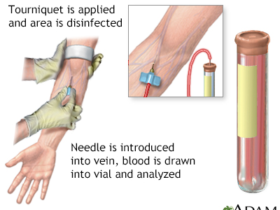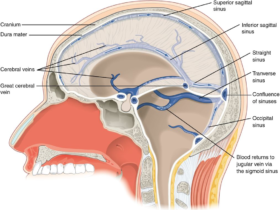Myasthenia Gravis (MG) is a chronic autoimmune disorder characterized by varying degrees of muscle weakness, which can affect any voluntary muscle group. Diagnosing this condition can be complex due to its fluctuating symptoms and overlap with other neuromuscular disorders. One of the essential diagnostic tools used by neurologists is the Tensilon test. This article delves into the intricacies of the Tensilon test, explaining its purpose, procedure, benefits, and limitations, providing essential insights for those diagnosed with or suspecting MG.
Understanding Myasthenia Gravis
Before exploring the specifics of the Tensilon it’s, it’s important to understand the condition it aims to diagnose. An immune-mediated attack on the acetylcholine receptors at the neuromuscular junction causes Myasthenia Gravis. This reduces the number of receptors available for muscle contraction, resulting in muscle weakness and fatigue. Symptoms often include ptosis (drooping of one or both eyelids), diplopia (double vision), difficulty swallowing, and generalized muscle weakness. The severity of these symptoms can fluctuate throughout the day and can be exacerbated by stress, illness, or exertion.
The Purpose of the Tensilon Test
The Tensilon test, also known as the Edrophonium test, is a diagnostic procedure used to evaluate the presence of MG. The test involves the administration of edrophonium chloride, a drug that temporarily inhibits the breakdown of acetylcholine, thereby enhancing neuromuscular transmission. This temporary increase in acetylcholine availability can improve muscle strength in patients with MG, providing a quick and effective diagnostic clue.

How the Tensilon Test is Conducted
Pre-Test Preparation
Before undergoing the Tensilon test, patients typically undergo a thorough clinical evaluation, including a detailed history and physical examination. This helps to identify symptoms suggestive of MG and rule out other potential causes of muscle weakness. Patients are also informed about the procedure, its purpose, and potential risks. In some cases, other diagnostic tests, such as blood tests for acetylcholine receptor antibodies or electromyography (EMG), may be performed before the Tensilon test.
The Test Procedure
The Tensilon test is usually conducted in a controlled clinical setting, often a neurologist’s gist’s office or a hospital. The procedure involves the following steps:
- Baseline AssessmentThe patient’s muscle strength is assessed before administering the drug. This typically includes testing the strength of muscles commonly affected in MG, such as those controlling eyelid movement and swallowing.
- Drug Administration: Edrophonium chloride is administered intravenously in small incremental doses. The typical starting dose is 2 mg, followed by additional doses up to 10 mg, if necessary. The drug acts quickly, with effects typically seen within 30 to 60 seconds.
- Observation: The patient is closely monitored for any changes in muscle strength. An immediate and noticeable improvement in muscle strength following the administration of edrophonium chloride is considered a positive test, suggesting the presence of MG.
- Post-Test Monitoring: After the test, patients are monitored for any adverse reactions to the drug, such as bradycardia (slow heart rate), hypotension (low blood pressure), or bronchospasm (difficulty breathing). Atropine, a drug that can counteract these side effects, is kept on hand as a precaution.
Benefits of the Tensilon Test
Rapid Diagnosis
One of the primary benefits of the Tensilon test is its ability to provide a rapid diagnosis. For patients experiencing significant muscle weakness, a quick diagnosis can be critical in initiating appropriate treatment and management strategies. The immediate improvement in muscle strength observed in a positive test can offer both patients and clinicians a clear indication of MG, guiding further diagnostic and therapeutic decisions.
Non-Invasive Procedure
The Tensilon test is a relatively simple and non-invasive procedure compared to other diagnostic methods, such as muscle biopsies or more extensive imaging studies. This makes it a preferable option for many patients and clinicians, offering a quick and effective way to assess muscle strength and neuromuscular function.
Limitations and Risks of the Tensilon Test
False Positives and Negatives
While the Tensilon test can be highly informative, it has limitations. False positives can occur when patients without MG show improvement in muscle strength due to other factors. Conversely, false negatives can also happen where patients with MG do not show significant improvement following the administration of edrophonium chloride. These limitations necessitate using the Tensilon test as part of a broader diagnostic approach, incorporating clinical evaluation, antibody testing, and electromyography.
Adverse Reactions
Although generally well-tolerated, the Tensilon test can cause adverse reactions in some patients. Common side effects include nausea, increased salivation, and sweating. Although rare, more serious reactions, such as bradycardia, hypotension, and bronchospasm, can occur and require immediate medical attention. The presence of a healthcare professional equipped with emergency medications, such as atropine, is essential to manage any potential complications.
Short Duration of Effects
The effects of edrophonium chloride are short-lived, typically lasting only a few minutes. While this rapid onset and short duration can be beneficial for diagnostic purposes, it also means that the test does not provide long-term information about the patient’s condition or response to treatment.

The Role of the Tensilon Test in Modern Medicine
Complementary Diagnostic Tool
In contemporary medical practice, the Tensilon test is often used in conjunction with other diagnostic tools. Advances in antibody testing and imaging techniques have provided additional methods for diagnosing MG, making the Tensilon test one of several tools used to confirm the diagnosis. This multimodal approach ensures a more accurate and comprehensive evaluation of patients presenting with neuromuscular symptoms.
Historical Significance
The Tensilon test holds historical significance in the field of neurology, having been a cornerstone in the diagnosis of MG for many years. While newer diagnostic methods have emerged, the test remains valuable, particularly in settings where rapid bedside assessment is needed.
Conclusion
The Tensilon test is a pivotal diagnostic tool in evaluating Myasthenia Gravis, offering a rapid and non-invasive method to assess muscle strength and neuromuscular function. While it has its limitations and risks, its ability to provide immediate diagnostic insights makes it an essential component of the diagnostic process for MG. Understanding the procedure, benefits, and limitations of the Tensilon test can help patients and healthcare providers navigate the complexities of diagnosing and managing this challenging condition effectively.
Also, Read The Following: Aldolase.

















Got a Questions?
Find us on Socials or Contact us and we’ll get back to you as soon as possible.